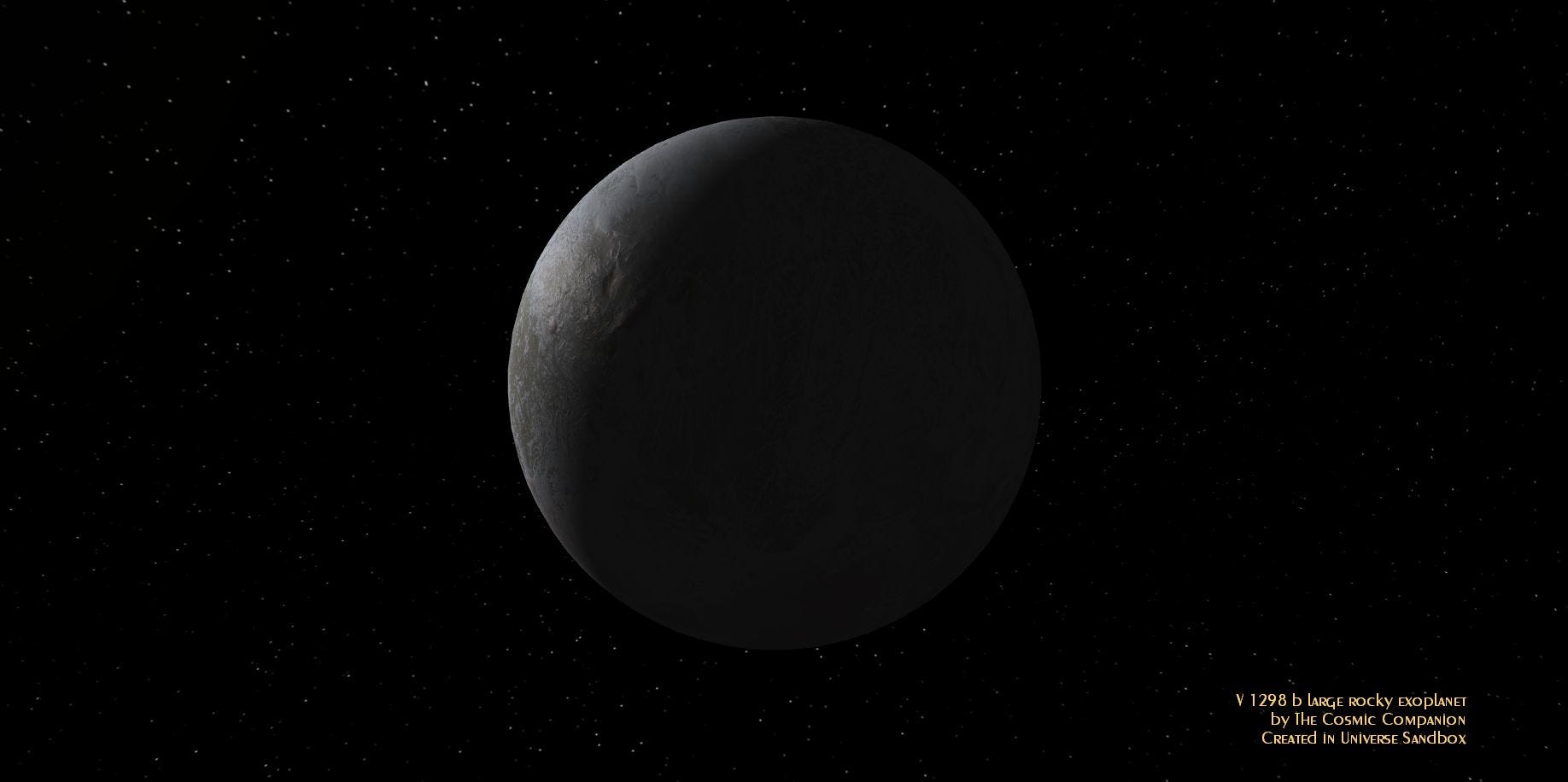A younger sun
“He lost himself in the words and images conjured in his mind and for a while forgot … He found himself flying among stars and planets…”
― Carlos Ruiz Zafón, The Prince of Mist
The star at the center of the V 1298 system is a younger version of our own stellar companion. Roughly the same mass and size as the Sun, V 1298 is just 25 million years old. If our own Sun (roughly 4.5 billion years old) is thought of as a 45-year-old person (the Sun is, in fact, a mid-aged star), V 1298 would be the equivalent of a three-month-old infant.
 A look at what V 1298 b might look like, as it orbits around its sun-like star. Image credit: The Cosmic Companion / created in Universe Sandbox.
A look at what V 1298 b might look like, as it orbits around its sun-like star. Image credit: The Cosmic Companion / created in Universe Sandbox.The two planets closest to the star are both about the size of Neptune, while the two further out are each the size of Saturn. Astronomers studied these worlds with the Chandra X-ray telescope, looking to measure the amount of radiation pouring down on these worlds.
The study concluded that the innermost pair of planets would, likely, be stripped of any atmosphere, while the outermost planet would remain a gas giant, similar to Saturn. The third (known) planet from the star remains an enigma.
[embedded content]
In the video above, look at the eRosita X-ray telescope, part of the “Spektrum-Röntgen-Gamma” (SRG) Mission.
As this stellar system ages, the rotational rate of the star slows. Since X-ray emission (and magnetism) is driven by the rotation of stars, the levels of X-ray radiation produced by the young star decreases over time.
“The evaporation of the exoplanets depends on whether the star spins down quickly or slowly over the next billion years — the faster the spin-down, the less atmosphere is lost,” explains doctoral student and Laura Ketzer of AIP.
The atmospheres of exoplanets can tell us much about the mysterious worlds that orbit distant stars. A new generation of X-ray telescopes, including eRosita (launched in July 2019), is poised to uncover a wealth of new information about our other worlds in our stellar neighborhood.
This article was originally published on The Cosmic Companion by James Maynard, founder and publisher of The Cosmic Companion. He is a New England native turned desert rat in Tucson, where he lives with his lovely wife, Nicole, and Max the Cat. You can read this original piece here.
Astronomy News with The Cosmic Companion is also available as a weekly podcast, carried on all major podcast providers. Tune in every Tuesday for updates on the latest astronomy news, and interviews with astronomers and other researchers working to uncover the nature of the Universe.
